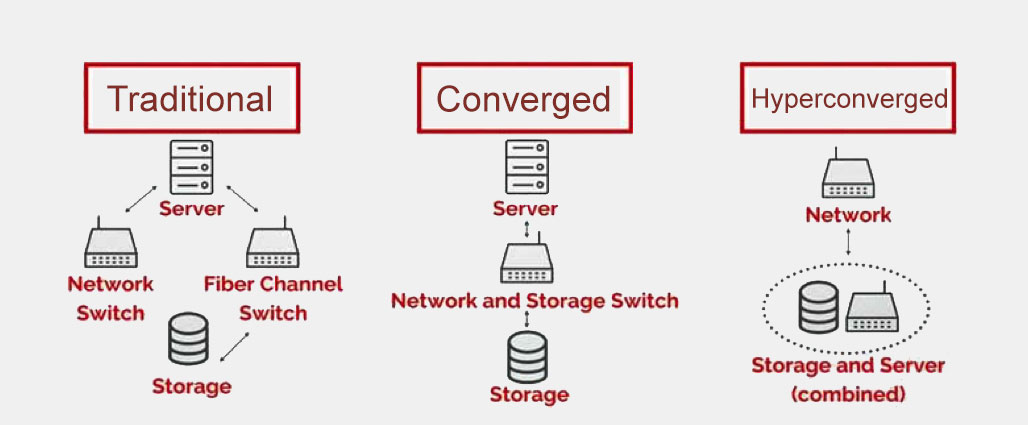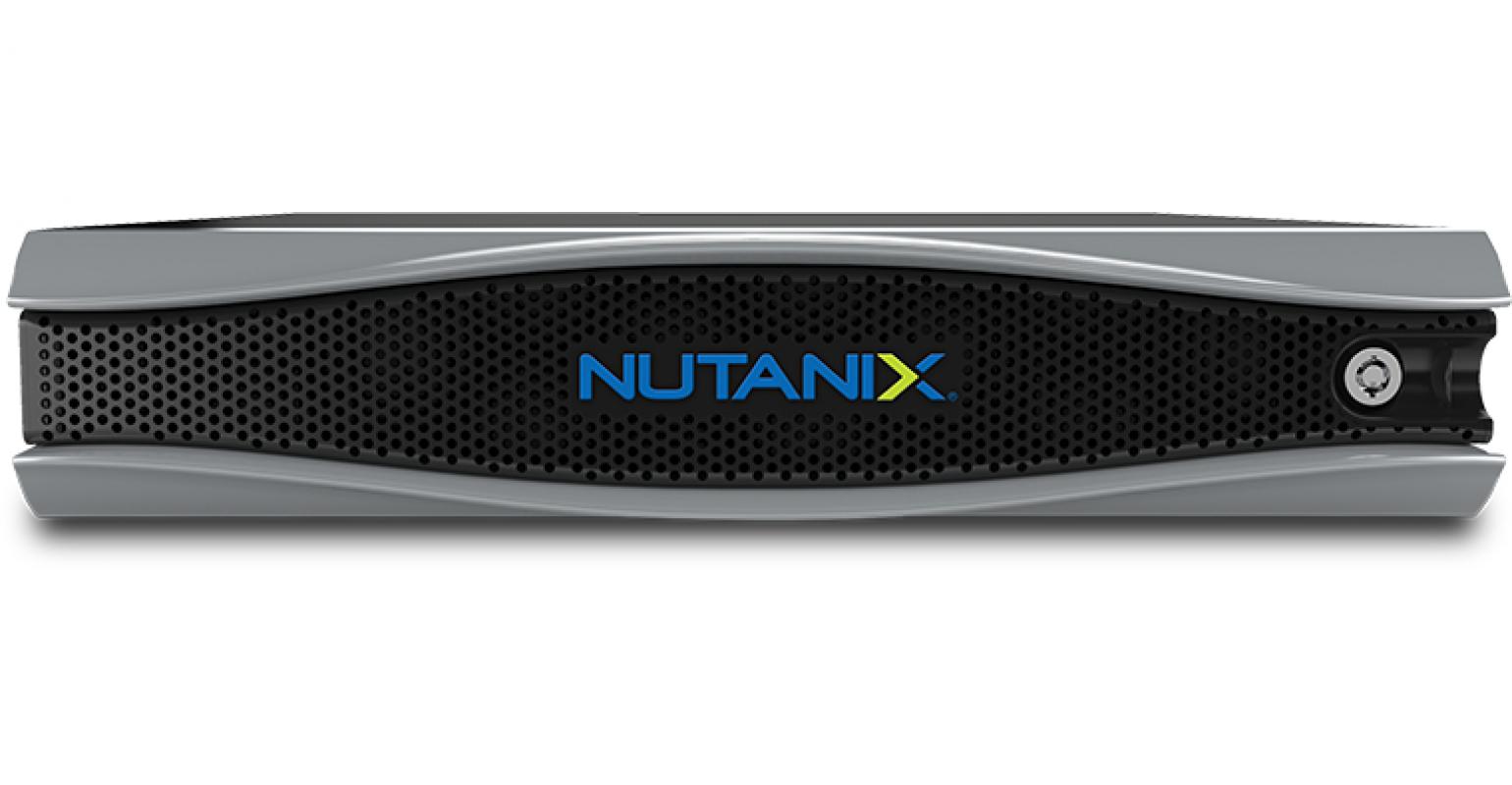Converged vs Hyperconverged Infrastructure
HCI lowers the variety of systems to be managed, the time spent on developing and constructing IT systems and https://Www.Bouldermassageinstitute.com/community/Profile/duane713995956/ releasing a big number of applications, while reducing the intricacy of integrating numerous diverse resources. HCI integrates commodity information center server hardware with locally attached storage (often flash) that is powered by a dispersed software layer, which disperses all operating functions throughout a cluster (numerous nodes) for superior performance and strength.
Virtualization software abstracts and pools the hidden resources of the node. To optimize performance, the software dynamically allocates resources to applications running within virtual devices (VMs) or containers. By using a native hypervisor on the node or cluster, the underlying storage is architected and embedded straight within the hypervisor, removing the need for inefficient storage protocols, file systems and virtual storage appliances (VSAs).
The current generations of x86 servers provide broad compatibility to support a large range of software development needs while their dependability and https://Dnfmaps.com/community/profile/valeriafreeh31/ scalability (in part due to high-performance network, computing and storage abilities) make them ideal for application hosting. HCI is developed to fix difficulties caused by a conventional 3-tiered architecture (3-tiered architecture is the use of independent servers, storage and networking parts).
Traditional architecture layers need their own management systems, https://techiestudent.me/ specific assistance services, trainings and accreditations. Compatibility in between suppliers is a continuous difficulty. For instance, businesses need to ensure that vendor X’s latest upgrade is suitable with supplier Y’s and so on. HCI helps companies to: Quickly manage heterogenous workloads on a single cluster.
 VxRail Hyperconverged infrastructure Appliance With Dell VSAN Egypt
VxRail Hyperconverged infrastructure Appliance With Dell VSAN EgyptRead also
What Is Hyperconverged Infrastructure?
https://literacyconnections.org/community/profile/stephenlewis839/.
Dynamically adjust to altering resource requirements. Autonomously keep track of quality of service, consequently speeding resolution of problems that may arise. Quickly scale computing and storage by including more nodes to existing clusters, without application or services downtime. Establish policy-based management that enables admins to define storage requirements for a provided workload.
Hyper-converged Infrastructure Appliance Market
Control costs: Dynamic resource allocation optimizes physical and expert resources to reduce expenses while satisfying growing organizational demand and the SLAs around IT services. HCI assists manage capital expenses and repeating expenditures. HCI uses industry-standard parts (e. g., x86 servers, 10GB ethernet, and so on) rather than purpose-built storage arrays and fiber channel networking to drive cost performances starting at procurement.
Hyperconverged facilities leverages automation to deliver functional efficiencies. Software application allows rapid deployment of cloud infrastructure, removes manual jobs like provisioning and handling storage and automates processes like patching, updating and upgrading infrastructure. Numerous HCI suppliers offer continuous licensing that performs several infrastructure revitalizes and keeps assistance at a repaired expense.
Consistent facilities operations are integral to running and managing applications in between environments. HCI provides a singular model for facilities operations by providing dynamic capacity, consolidating on-premises facilities and providing the capability to establish and check new applications. Taking a common approach breeds consistency and simplicity allowing rapid implementation of new VMs, containers and next-generation appliances.
Some of the benefits of HCI are: Increased IT performance: Computing, storage and networking resources are hosted in a single location, which means less systems and suppliers to manage. Automation in HCI eliminates manual procedures, which increases performance and saves IT time. Lowered storage and costs: HCI permits businesses to prevent big upfront expenses by utilizing industry-standard x86 servers and scaling the data center capacity as needed.
Simplified implementation: HCI options are readily available in enhanced, pre-defined plans, so services can just buy and run them. HCI enables central management of all virtual environments through a single interface, which streamlines system management. Increased efficiency: With HCI, organizations can release a number of applications and https://www.truckcentral.co.uk/converged-and-hyperconverged-solutions/ work without stressing over minimized performance.
Upgrade Outdated hardware Infrastructure
Improved flexibility and scalability: HCI utilizes a building-block method that makes it possible for services to easily scale by simply including units based on their organization requirements. Advanced security: Hyperconvergence software application is built to expect and manage hardware failure to improve information defense. Lots of HCI vendors use AES-256 software application encryption, self-encrypting drives (SEDs) and integrated key management functions to get rid of the need for third-party software application, representatives or scripting.
A picture conserves point-in-time virtual copy of virtual device (VM) data including the VM’s power state, disk, memory, virtual network interface cards (virtual NICs/v, NICs) and files. Snapshots are commonly utilized as a failsafe rollback point before performing system upgrades, altering set up software or installing/uninstalling other parts. They work for development purposes, because they can be used consistently in a “rinse and repeat” style during development and software validation cycles.
Best practices from among the biggest hypervisor suppliers in the market, VMware, plainly discusses the intent and purpose of snapshots and they are not intended as backups. Some of the restrictions consist of: VMware advises not to surpass an optimum of 32 pictures in a chain. For finest performance, they suggest 2-3.
Photo files’ size increases the longer the photo is retained. This effects system performance and may trigger storage areas to lack space quicker. On the other hand, backup files are produced individually of the virtual maker. While a lot of modern-day backup technologies utilize the VM snapshot to copy data, they do not count on the photo staying in place.
 Hyper Converged Infrastructure and VDI – Rich’s Blog
Hyper Converged Infrastructure and VDI – Rich’s BlogBackups are quickly exported and saved on secondary media or reproduced to a secondary target to be saved in a warm state, easily offered for recovery. Backups are a vital part of organization continuity, making it possible for recovery time objectives (RTOs) and recovery point goals (RPOs) to be met. Photos do not make sure either of those goals.
Top 5 vendors to explore for hyperconverged infrastructure
 What is Hyperconverged Infrastructure (HCI)? Defining Hyperconvergence Nutanix
What is Hyperconverged Infrastructure (HCI)? Defining Hyperconvergence NutanixUnitrends delivers innovative healing functions that go far beyond the abilities of photos, consisting of granular product healing, instantaneous recovery for VMs and www.biharyouthfoundation.in Windows servers, automated application-level healing screening and more. Incorporate with Unitrends Cloud for cost-effective long-lasting retention and Disaster Recovery-as-a-Service (DRaa, S) to spin up key work in the event of a site-wide catastrophe.
A hyperconverged infrastructure (HCI) service is a primary tool for linking, managing and running interconnected business systems in a hyperconverged infrastructure (HCI). The technology assists organizations virtualize storage, servers, and networks. While converged infrastructure uses hardware to achieve this objective, HCI takes a software-centric approach. To be sure, hyperconvergence has its benefits and drawbacks.
By virtualizing elements it’s possible to construct more effective databases, storage systems, server frameworks and more. HCI solutions significantly extend from the information center to the edge. Many likewise incorporate expert system and artificial intelligence to constantly improve, adjust and adapt to fast-changing business conditions. Some likewise consist of self-healing functions.
This can cause a lower overall expense of ownership (TCO). Normally, HCI environments use a hypervisor, generally working on a server that uses direct-attached storage (DAS), to create an information center swimming pool of systems and resources. The majority of support heterogenous software and hardware systems. The end result is a more flexible, agile and scalable computing framework that makes it simpler to construct and manage private cloud, public clouds and hybrid clouds.
These include: Organizations have vastly different requirements when it pertains to linking existing facilities, clouds and edge services. For example, an organization may need just the storage layer in the cloud. Or it might wish to replicate or https://Pannustecidos.com.br/What-is-hyperconverged-infrastructure/ transform setups when changing cloud service providers. Ideally, an HCI solution allows a business to alter, update and adjust as facilities needs change.
